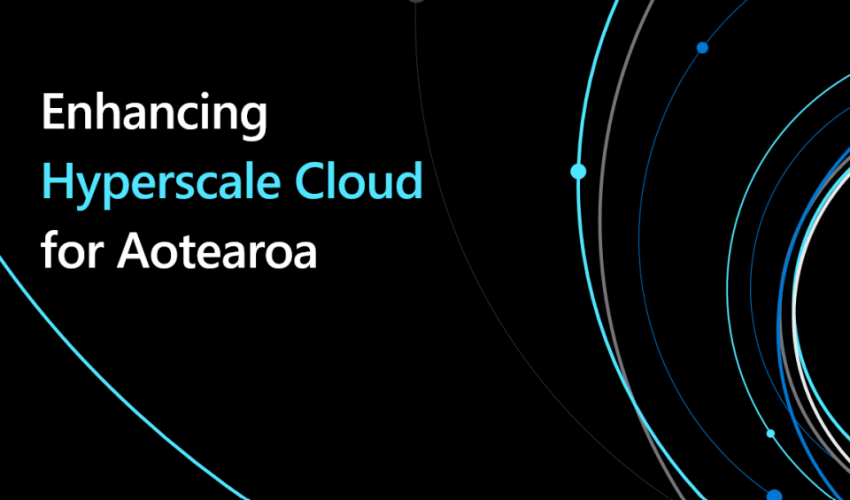Discover our nationwide festival for tech that's good for the world.
Overcoming Tech Debt: How To Make Your Cloud Pay
By Microsoft NZ , National Technology Officer Russell Craig
11 April 2023

Much of the talk about technology recently has been about digital transformation. The incredible rate at which businesses either switched to digital services and remote working for the first time, or boosted their capabilities to better serve customers, employees and stakeholders during and since the pandemic, has been well canvassed.
Yet along with that transformation has come an all-too-common side-effect – tech debt. A new IDC report commissioned by Microsoft reveals that tech debt accumulated during the pandemic is something that will affect 50 per cent of CIOs through 2023. As many are now discovering, the “quick and dirty” implementations that made getting through Covid-19 lockdowns possible now carry their own added costs.
What is tech debt?
Tech debt arises when speed of delivery is prioritised ahead of optimal architecture or coding, resulting in a higher number of patches and workarounds in a business’s existing tech stack. When systems aren’t properly integrated, or cloud consumption isn’t optimised, the result is inefficiencies, higher costs and often, frustration. Every new go-live has the potential to add to this, if it relies on a mix of outdated infrastructure and piecemeal architecture.
Called Public Cloud Services Opportunities and Dividends to the Australian and New Zealand Economies, the IDC report highlights that spending on public cloud services is ramping up, expected to almost double across Australia and New Zealand by 2026. Over the next five years, public cloud adoption will result in the creation of 596,000 jobs in Australia and 134,000 in New Zealand, across not only cloud suppliers, but across the organisations who adopt it, as a result of greater innovation and the growth of new products and services
The challenge for businesses is to be brave and make the call about addressing systems that aren’t future-proof now, fixing the foundations before they accumulate further tech debt.
Understandably, many organisations will hesitate to undo investments they’ve already made, especially in the current economic environment. Likewise, many will wish to avoid introducing system-wide change and disruption when things are working reasonably well – the old “if it ain’t broke” scenario. But as the report observes, a short-term period of disruption is far preferable to seeing your business and your digital transformation ultimately grind to a halt as further change and expansion become impossible.
I’m reminded of a long-ago government meeting about a major department’s critical software platform. When the department’s Minister doubted whether the cost of upgrading it was justified, someone pointed out: “Look at it this way, Minister. The system is like a 747 crossing the Pacific, and it’s running on one engine…“
As the Minister very quickly appreciated, without the crucial infrastructure, you’ve got nothing to run your organisation on – and the impact on your reputation could also be fatal.
Businesses who are currently using old on-premises architecture have incurred a different kind of tech debt, increasing their risk of ownership as systems reach end of service, security becomes less robust and infrastructure requires more and more maintenance and resource, creating productivity costs. They’re not only spending more money and time than they need to in the short term, in the longer term they also risk losing a great deal more if the vulnerabilities within the system are exploited by cybercriminals. Microsoft blocked more than 70 billion email and identity threats in 2021 alone. The threat is all too real – and once customer data is lost, it’s very hard to rebuild trust.
What can be done about existing tech debt?
Microsoft CEO Satya Nadella has called technology a deflationary force, as it has the power to reduce costs across organisations through greater productivity and efficiency, as well as stimulating growth through enhanced innovation. However, it’s important to have the right technology and approach to enable this, considering the role that cloud can play.
Using cloud in a methodical way can significantly reduce costs. A shared responsibility model, such as that provided by public cloud, means businesses don’t have to manage the whole stack. That can help address some of the challenges created by ongoing skills shortages, reducing the burden on in-house IT teams and freeing them up for innovation rather than simply keeping infrastructure and systems running. An Infrastructure as a Service or Software as a Service model also spreads the costs (and the benefits of constant investment in security and capabilities) across the whole global ecosystem – and helpfully, it also shifts the cost from capex to opex budgets.
Some Chief Financial Officers may have noticed cloud bills blowing out as a result of hasty migrations. If your organisation is already in this situation, the right IT partner can help monitor and address the immediate consumption issues, while creating a well-architected framework to ensure that longer-term, your systems and people are working in sync and only consuming the resources they need.
As well as building resilience, this can massively improve an organisation’s sustainability, something customers and partners are now demanding. Today’s hyperscale public cloud has the power to drastically reduce organisations’ carbon footprint. A study called The Carbon Benefits of Cloud Computing developed in partnership with WSP showed that the Microsoft Cloud is between 22 and 93 percent more energy efficient than traditional enterprise datacenters, depending on the specific comparison being made. When taking into account our renewable energy purchases, the Microsoft Cloud is between 72 and 98 percent more carbon efficient.
Finally, organisations need to consider the role that skilling and a culture change can play in reducing their tech debt. Introducing new systems that your people aren’t equipped to take advantage of often sees them stick to old ways of working. Before any new system is implemented, get support educating your teams on what it can do – and importantly, what it will mean for them and their customers – to create excitement, while also tapping into (often free) training programmes to enable your people to make the most of cloud technologies.
Risk vs benefit?
When it comes to addressing tech debt, while every position carries a cost, the key question to ask is which one gives the greatest benefit, vs the greatest risk? As the IDC report observes, the cloud has already changed how IT is architected and operated. Early choices made on platforms, resource management and operational workflows can create long-term obligations that potentially limit agility and growth opportunity. On the other hand, a little short-term pain to get these right will soon pay huge dividends to your teams, your customers, and your bottom line.
For more information and to read the IDC report, click here.
Subscribe to the Techweek newsletter for updates straight to your inbox:
Recent news
Selling business solutions to Malaysia's ICT sector
29 Apr 2024
This article was originally posted by myNZTE.
What do tech buyers in Singapore want?
29 Apr 2024
This article was originally posted by myNZTE. Companies in Singapore don't tend to know much about New Zealand's tech offerings, but they are open to them.


